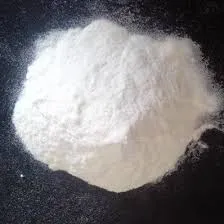
Dec . 22, 2024 04:33 Back to list
hydroxypropyl methylcellulose uses
The Versatile Uses of Hydroxypropyl Methylcellulose
Hydroxypropyl methylcellulose (HPMC) is a semi-synthetic polymer derived from cellulose, a natural polymer found in plant cell walls. Due to its unique chemical structure, HPMC possesses a range of properties that make it an invaluable ingredient in numerous industries, facilitating applications in food, pharmaceuticals, construction, and cosmetics.
The Versatile Uses of Hydroxypropyl Methylcellulose
The pharmaceutical industry also leverages HPMC for its binding and film-forming properties. It is widely used in the production of tablets and capsules, enabling controlled-release formulations that ensure medication is delivered at a steady rate over time. This quality is particularly important for chronic conditions requiring consistent medication levels in the bloodstream. Additionally, HPMC is utilized in ophthalmic solutions due to its ability to retain moisture, providing relief for dry eyes. Its biocompatibility and non-toxic nature make it suitable for various medical applications, further underscoring its significance in healthcare.
hydroxypropyl methylcellulose uses

In the construction sector, HPMC serves as an essential additive in cement-based products, improving workability and adhesion. It helps enhance the water retention of mortars and plasters, which can significantly improve bonding strength and durability. As construction materials evolve to meet environmental standards, HPMC's ability to improve the performance of green building materials makes it a valuable ingredient in sustainable construction practices. Its effectiveness in preventing cracking and shrinkage during the drying phase of construction materials also contributes to longer-lasting structures.
The cosmetic industry has embraced HPMC for its ability to act as a thickening and emulsifying agent in lotions, creams, and gels. It provides desirable viscosity and texture while ensuring that the product maintains stability over time. Furthermore, HPMC can help in improving the overall feel of cosmetic products, ensuring they are smooth and easily spreadable. Its gentle nature makes it suitable for sensitive skin formulations, allowing manufacturers to cater to a broad audience without compromising quality.
In summary, hydroxypropyl methylcellulose is a remarkably versatile compound that finds applications across various industries. Its unique chemical properties allow it to function effectively as a thickener, binder, stabilizer, and emulsifier, enhancing the performance and quality of products ranging from food and pharmaceuticals to construction materials and cosmetics. As research continues to explore its potential, HPMC's role in innovative formulations and sustainable practices is likely to expand, solidifying its status as an essential ingredient in modern manufacturing. Whether in a gluten-free bake, a controlled-release medication, or a luxurious skincare product, HPMC exemplifies the intersection of nature and science, paving the way for improved products that enrich our daily lives.
-
Versatile Hpmc Uses in Different Industries
NewsJun.19,2025
-
Redispersible Powder's Role in Enhancing Durability of Construction Products
NewsJun.19,2025
-
Hydroxyethyl Cellulose Applications Driving Green Industrial Processes
NewsJun.19,2025
-
Exploring Different Redispersible Polymer Powder
NewsJun.19,2025
-
Choosing the Right Mortar Bonding Agent
NewsJun.19,2025
-
Applications and Significance of China Hpmc in Modern Industries
NewsJun.19,2025







